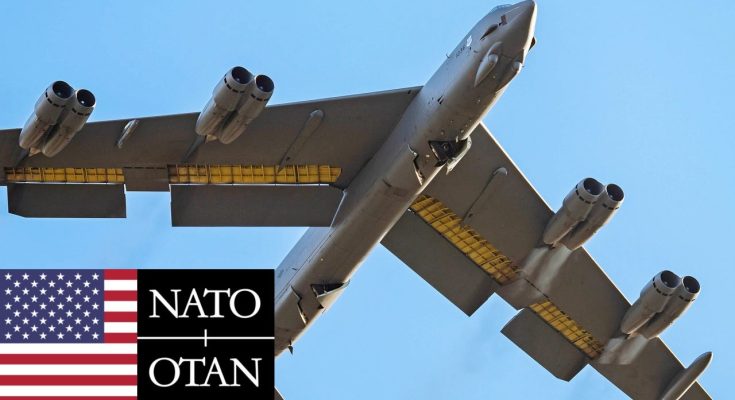US Air Force, NATO B-52H Bombers During Joint Military Exercises in Europe
In recent years, the United States Air Force (USAF) has intensified its presence in Europe, showcasing its capabilities and reinforcing NATO’s collective defense strategy. One of the most prominent features of this presence is the deployment of the B-52H Stratofortress bombers, which have been participating in joint military exercises across the continent. These exercises are not only a demonstration of military might but also a critical component of NATO’s deterrence strategy, especially in light of evolving threats from adversaries like Russia.
The Role of B-52H Bombers in NATO Exercises
The B-52H Stratofortress is one of the most iconic and enduring strategic bombers in the world, having been in service since the 1950s. Despite its age, the B-52 remains a formidable asset due to its long-range strike capabilities, payload capacity, and versatility. During joint military exercises in Europe, the B-52H is often deployed as a part of NATO’s larger defense operations, providing a powerful presence in the skies.
These bombers are capable of delivering a wide range of munitions, including conventional bombs, precision-guided missiles, and even nuclear weapons, making them a crucial element of the U.S. strategic deterrence posture. The integration of B-52H bombers into NATO’s exercises serves several purposes: enhancing interoperability among NATO member forces, strengthening the alliance’s ability to respond to a variety of scenarios, and sending a clear message to adversaries about the collective defense capabilities of the alliance.
Key Exercises and Strategic Importance
One of the most notable instances of B-52H participation in joint military exercises was during Operation Atlantic Resolve, which involves regular rotations of U.S. forces to European NATO countries to reassure allies and deter potential threats. The B-52Hs take part in simulated combat scenarios, often alongside NATO fighter jets and other aircraft, practicing long-range strikes, precision bombing, and air-to-air coordination.
In addition, Bomber Task Force missions have become a regular feature of U.S. and NATO exercises, where B-52s are deployed to European airbases for training with allied forces. These missions help to improve the coordination between the U.S. Air Force and NATO members, ensuring that all participating nations are able to operate seamlessly together in case of a crisis. Furthermore, the B-52’s involvement in these exercises serves to demonstrate the U.S.’s commitment to NATO and its strategic capability to rapidly deploy forces across the continent.
Deterrence and Reassurance
The presence of B-52 bombers in Europe is part of the broader U.S. strategy of deterrence. In particular, it aims to counter potential threats from Russia, which has become increasingly assertive in recent years, especially in the Baltic region and Ukraine. The B-52H bombers provide a visible, high-profile reminder of NATO’s commitment to collective defense, as enshrined in Article 5 of the NATO treaty, which states that an attack on one member is an attack on all.
By deploying B-52s on rotational missions and involving them in joint exercises, the U.S. and NATO send a powerful signal to adversaries that the alliance is prepared to respond to any form of aggression. This deterrence is not just about the bombers themselves, but about the collective military capability and readiness of NATO forces.
Interoperability and Advanced Training
A key benefit of these joint exercises is the opportunity for NATO forces to enhance interoperability with U.S. assets like the B-52. During these exercises, NATO pilots and ground crews work alongside their American counterparts, learning the intricacies of coordinating with strategic bombers. This improves the overall effectiveness of the alliance’s operations, ensuring that NATO’s response to crises is swift and unified.
The B-52H’s participation in exercises also allows for valuable training in various operational scenarios, including precision strikes, rapid deployment, and long-range coordination with NATO’s missile defense systems and fighter jets. Such exercises hone the skills of aircrews and commanders, ensuring that they are prepared for a wide range of potential conflicts, from conventional warfare to hybrid threats.
Conclusion
The deployment of B-52H bombers during joint military exercises in Europe is a critical component of NATO’s strategy to maintain peace, stability, and deterrence in a region facing rising tensions. Through these exercises, the U.S. and NATO strengthen their military readiness, enhance interoperability, and reaffirm their commitment to collective defense. The B-52H, with its unmatched range and strike capability, serves as a symbol of NATO’s resolve, capable of projecting power and responding to threats far beyond Europe’s borders. In a time of shifting global security dynamics, such exercises are vital for ensuring that NATO remains prepared to counter any emerging challenges.



